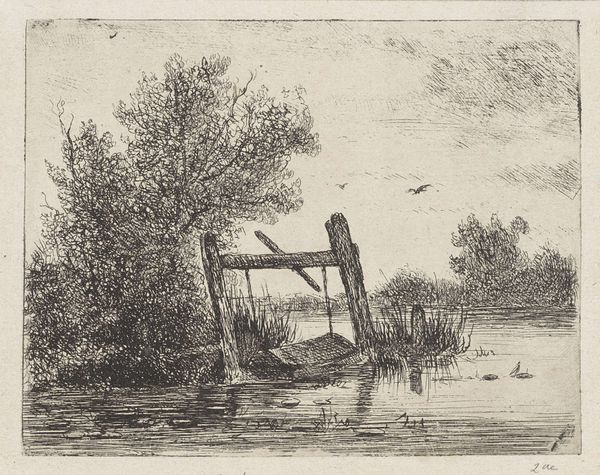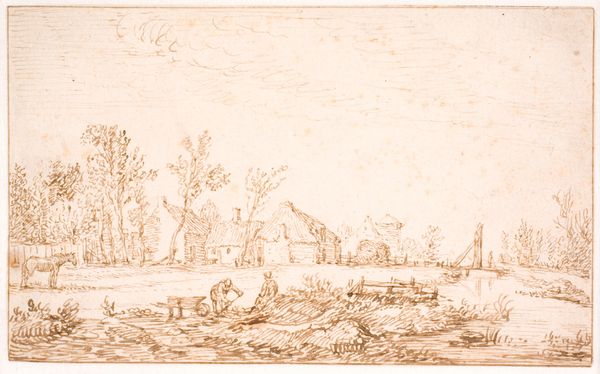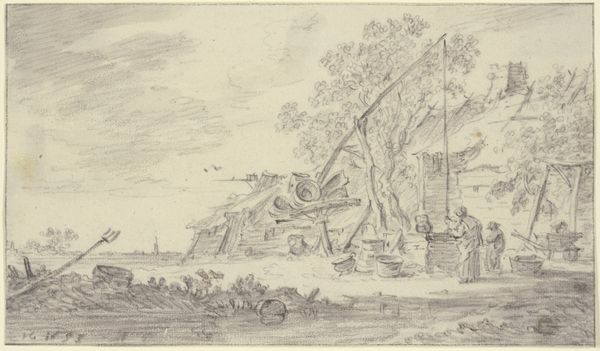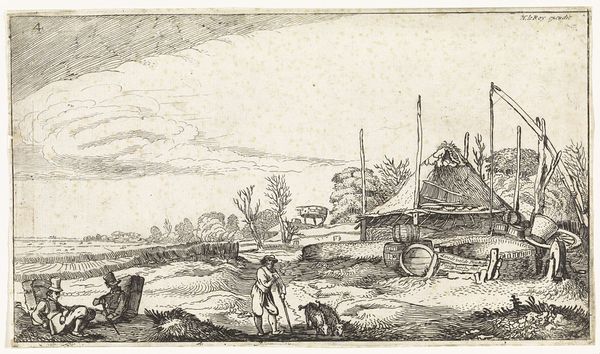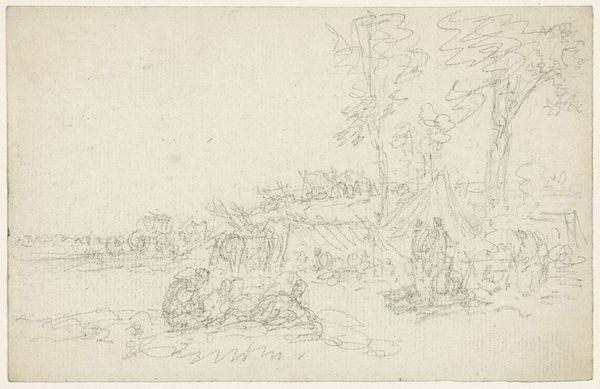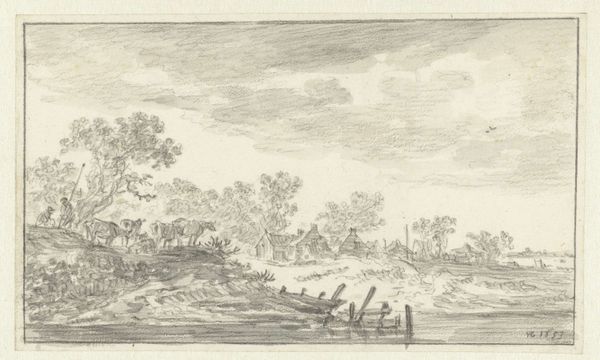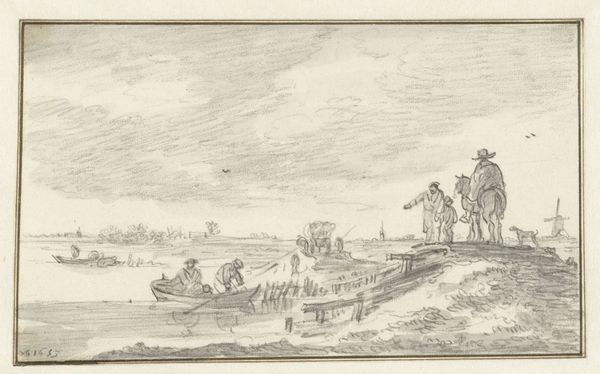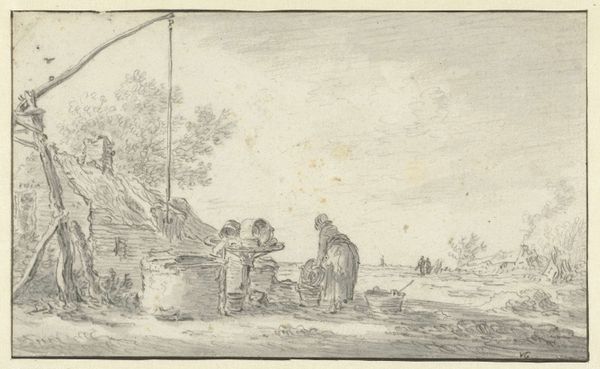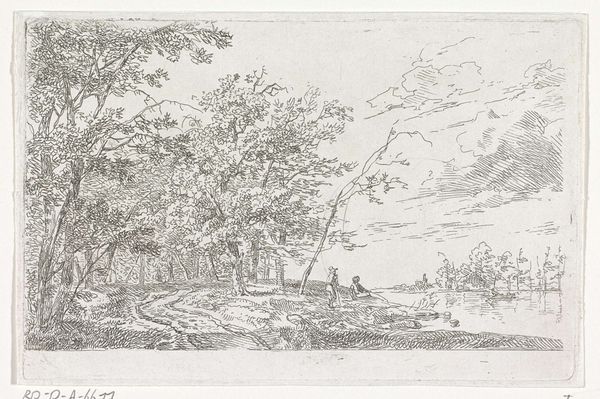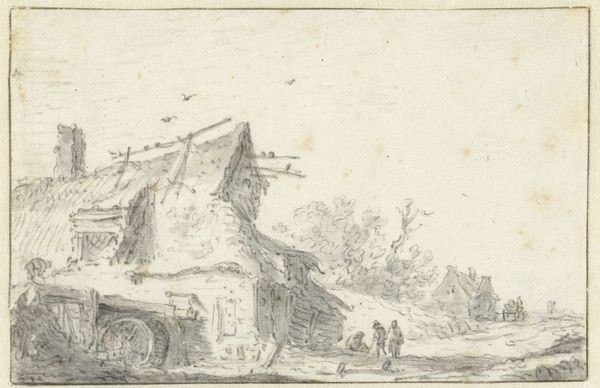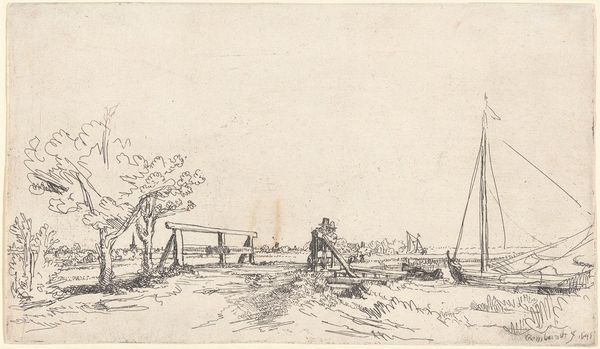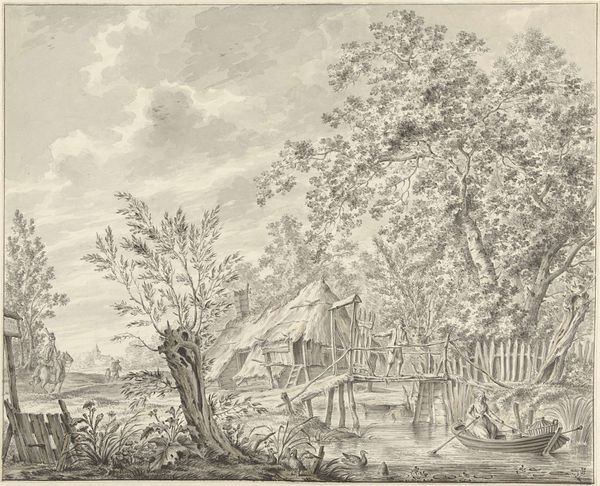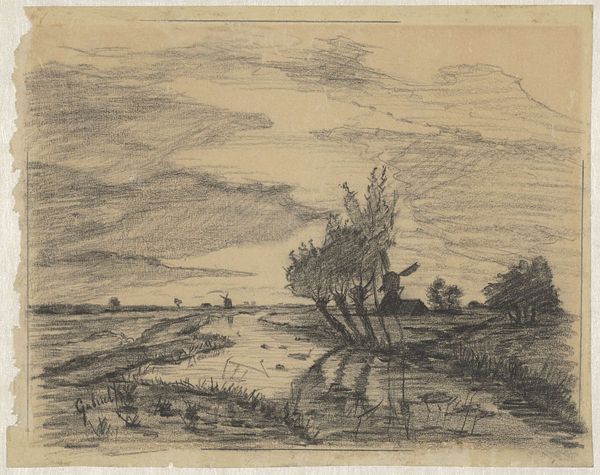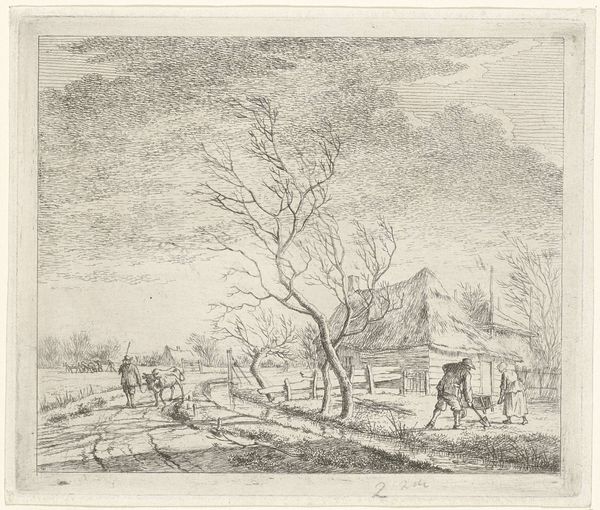
drawing, pencil
#
drawing
#
baroque
#
dutch-golden-age
#
landscape
#
figuration
#
pencil
#
realism
Dimensions: height 115 mm, width 193 mm
Copyright: Rijks Museum: Open Domain
Curator: "Two Figures at a Well," a drawing completed around 1653 by Jan van Goyen, really encapsulates the Dutch Golden Age’s artistic spirit. Editor: There’s such a serene quietude evoked by this drawing, even with the figures busying themselves. It feels incredibly grounded, earthy in tone, despite just being a pencil sketch. Curator: Van Goyen was celebrated for his landscape art and really skillful at creating an atmospheric perspective that is evident here. It's a relatively simple scene, yes, but what symbols do you notice in this rustic image? Editor: The well, of course, is central and, well, rather obvious in what it implies; it is a symbol of life and provision, absolutely vital for a community's sustenance. There is a lone fisherman in the distance. In Christianity, he's a follower of Christ who provides and aids the vulnerable. Also notice the people are not idealized here - they're common folk. Curator: Exactly! The emphasis on everyday people reflected larger cultural shifts. There was increasing urban prosperity during the Dutch Golden Age and more art patrons emerged from mercantile classes and demanded art to affirm their values of daily work and realism in natural scenery. The rising Dutch middle class now had the means to spend on aesthetic works, changing the game for painters. Editor: So, not grandiose biblical narratives or mythological scenes for the wealthy aristocracy anymore? How refreshing to view scenes of relatable, quiet life, democratized by commerce. It's intriguing how something like pencil on paper can reflect and affect so much! Curator: Van Goyen chose seemingly simple subjects in a style characterized by loose strokes and an earthy palette, so there's almost no visible brushwork in the final presentation of artwork in order to further enhance the picture's authenticity and relatability. It's interesting to consider how such choices are never neutral; they’re actively shaping a relationship with his growing Dutch audience and market. Editor: Indeed. I look at this work now with new eyes, hearing those echoes of cultural change in a deceptively gentle landscape, reflecting the values of the everyday, so far from royal halls or mythic heroism. Curator: For me, pondering its place within the historical currents brings its modest power to the forefront; it connects us directly to a moment of profound socio-economic transition. Editor: Right! And to think, it all started with a few strokes from a pencil.
Comments
No comments
Be the first to comment and join the conversation on the ultimate creative platform.
